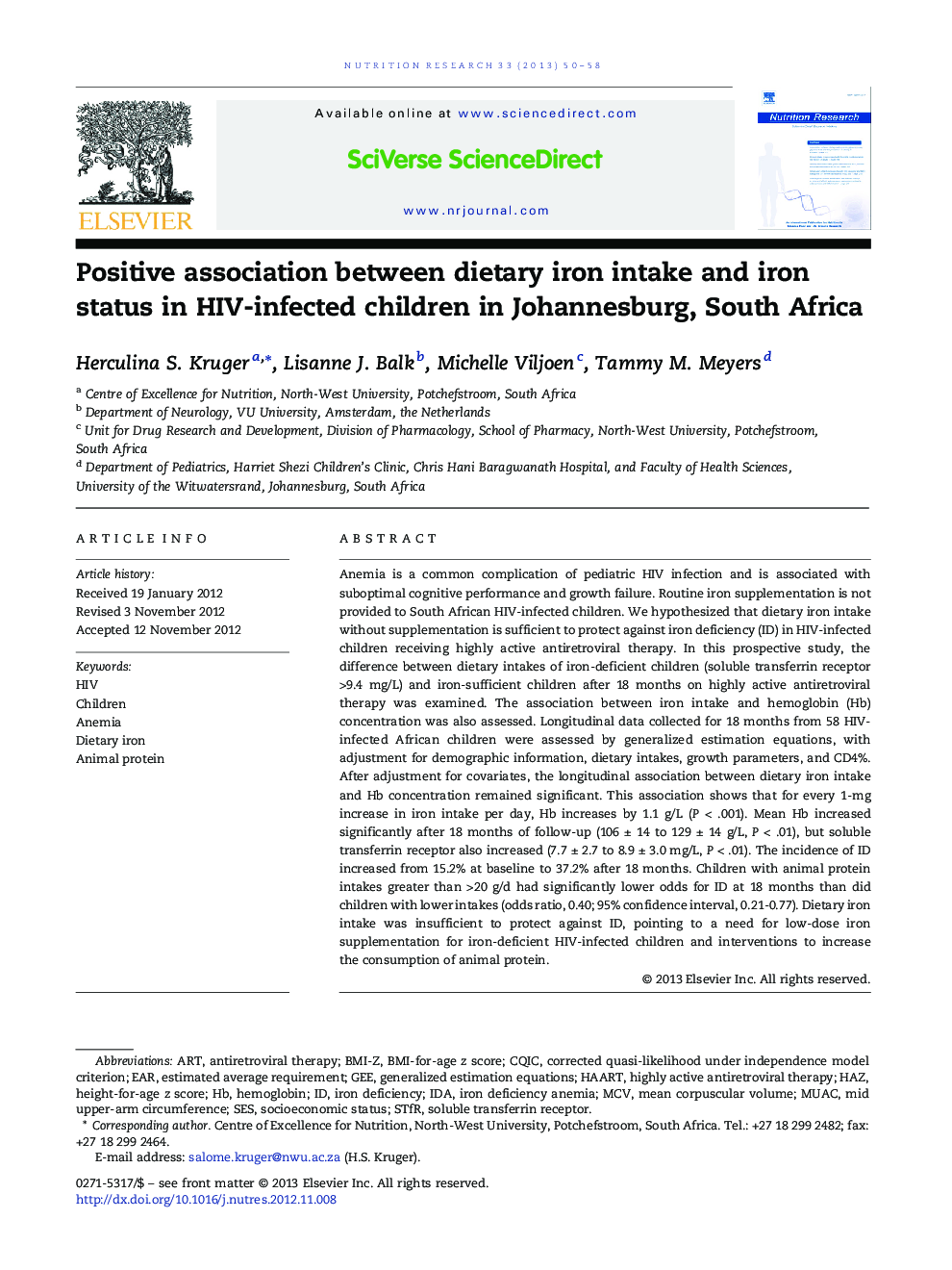| کد مقاله | کد نشریه | سال انتشار | مقاله انگلیسی | نسخه تمام متن |
|---|---|---|---|---|
| 2809180 | 1158020 | 2013 | 9 صفحه PDF | دانلود رایگان |

Anemia is a common complication of pediatric HIV infection and is associated with suboptimal cognitive performance and growth failure. Routine iron supplementation is not provided to South African HIV-infected children. We hypothesized that dietary iron intake without supplementation is sufficient to protect against iron deficiency (ID) in HIV-infected children receiving highly active antiretroviral therapy. In this prospective study, the difference between dietary intakes of iron-deficient children (soluble transferrin receptor >9.4 mg/L) and iron-sufficient children after 18 months on highly active antiretroviral therapy was examined. The association between iron intake and hemoglobin (Hb) concentration was also assessed. Longitudinal data collected for 18 months from 58 HIV-infected African children were assessed by generalized estimation equations, with adjustment for demographic information, dietary intakes, growth parameters, and CD4%. After adjustment for covariates, the longitudinal association between dietary iron intake and Hb concentration remained significant. This association shows that for every 1-mg increase in iron intake per day, Hb increases by 1.1 g/L (P < .001). Mean Hb increased significantly after 18 months of follow-up (106 ± 14 to 129 ± 14 g/L, P < .01), but soluble transferrin receptor also increased (7.7 ± 2.7 to 8.9 ± 3.0 mg/L, P < .01). The incidence of ID increased from 15.2% at baseline to 37.2% after 18 months. Children with animal protein intakes greater than >20 g/d had significantly lower odds for ID at 18 months than did children with lower intakes (odds ratio, 0.40; 95% confidence interval, 0.21-0.77). Dietary iron intake was insufficient to protect against ID, pointing to a need for low-dose iron supplementation for iron-deficient HIV-infected children and interventions to increase the consumption of animal protein.
Journal: Nutrition Research - Volume 33, Issue 1, January 2013, Pages 50–58